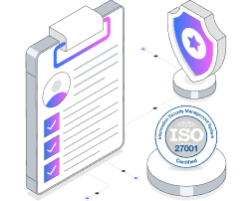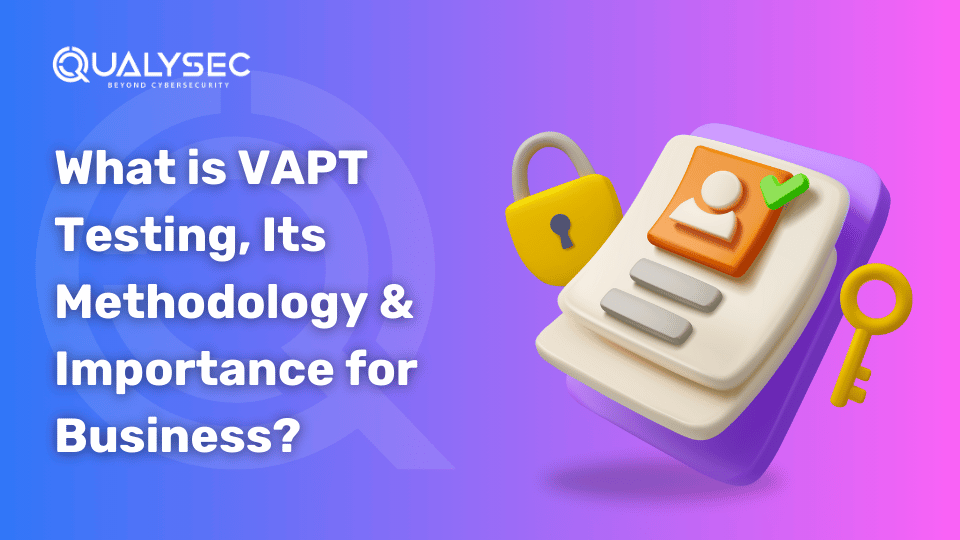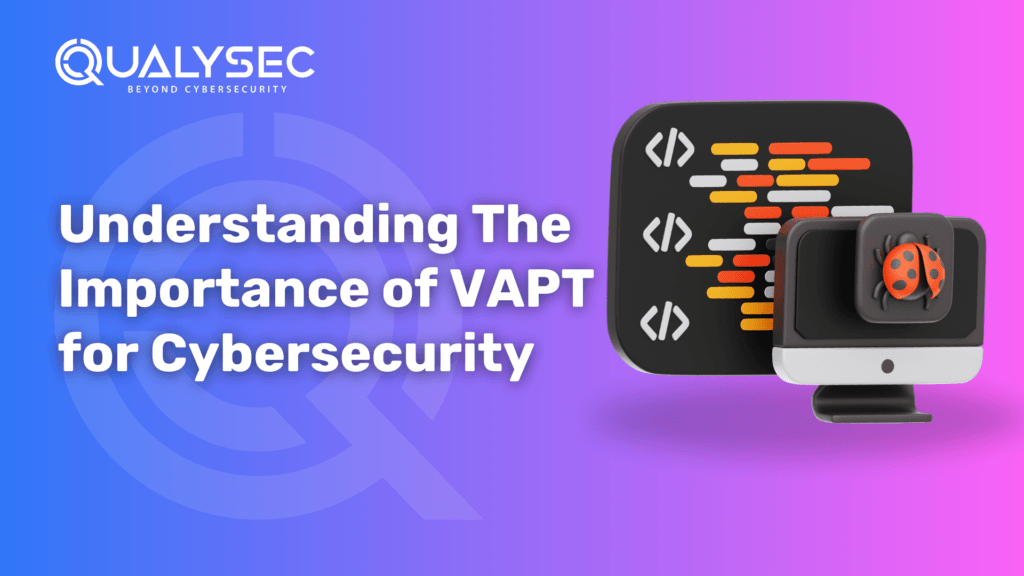What is VAPT Testing, Its Methodology & Importance for Business?
Data breaches are becoming more frequent, affecting industries like fintech, IT, healthcare, and banking. No organization is completely safe. According to the latest reports, the average cost of a data breach increased to $4.45 million in 2023, a 2.3% rise from 2022. Meanwhile, critical infrastructure businesses faced even higher costs, reaching $4.82 million on average per breach. To counter these cyber threats, companies rely on Vulnerability Assessment and Penetration Testing (VAPT)—a comprehensive security testing approach that identifies and mitigates vulnerabilities before attackers exploit them. In this blog, we will explore VAPT in detail: its methodology, importance, and how businesses can benefit from it. What is VAPT Testing? Vulnerability Assessment and Penetration Testing (VAPT) is a structured cybersecurity process designed to detect, analyze, and address vulnerabilities in systems, networks, and applications. It combines two key approaches: Vulnerability Assessment (VA): Focuses on identifying security weaknesses in a system. Penetration Testing (PT): Simulates real-world attacks to determine how exploitable those weaknesses are. Method & Goal of VAPT VAPT helps organizations stay ahead of cyber threats by proactively identifying and fixing security gaps before they can be exploited. The process involves: Vulnerability Assessment: Scanning tools and manual techniques are used to detect vulnerabilities. Penetration Testing: Ethical hackers simulate real-world attacks to assess how these vulnerabilities can be exploited. With the rise of AI-driven cyberattacks and automated hacking tools in 2025, VAPT has become even more critical. Businesses need to test their defenses regularly to ensure resilience against evolving threats. Why is VAPT Important? VAPT helps businesses: Prevent data breaches: By fixing vulnerabilities before hackers can exploit them. Meet compliance requirements: Regulations like GDPR, PCI-DSS, HIPAA, and ISO 27001 mandate security testing. Protect brand reputation: A data breach can lead to financial and reputational damage. Avoid financial losses: Cyberattacks can cost millions in damages and fines. With increasing regulatory scrutiny in 2025, noncompliance with security standards can result in severe penalties, making VAPT a necessity for businesses of all sizes. Difference Between Vulnerability Assessment and Penetration Testing Vulnerability Assessment Penetration Testing Identifies and categorizes security vulnerabilities. Actively exploits vulnerabilities to assess security risks. Uses automated tools to scan for weaknesses. Uses ethical hacking techniques to mimic real cyberattacks. Provides a prioritized list of vulnerabilities. Identifies the attack path a hacker might take. Suitable for regular security assessments. Best for in-depth security evaluations after a vulnerability assessment. By integrating both approaches, businesses can ensure a robust cybersecurity posture that keeps their systems and data protected. Talk to our Cybersecurity Expert to discuss your specific needs and how we can help your business. Schedule a Call What is the VAPT Methodology? There are 3 different methods or strategies used to conduct VAPT, namely; Black box testing, white box testing, and gray box testing. Here’s what you need to know about them: 1. Black Box Testing A black box penetration test provides the tester with no knowledge about what is being tested. In this scenario, the pen tester executes an attacker’s plan with no special rights, from initial access and execution until exploitation. 2. White Box Testing White box testing is a type of testing in which the tester has complete access to the system’s internal code. He has the appearance of an insider. The tester understands what the code expects to perform in this type of testing. Furthermore, it is a method of testing a system’s security by examining how effectively it handles various types of real-time assaults. 3. Gray Box Testing The tester is only provided a limited amount of information during a grey box penetration test, also known as a transparent box test. Typically, this is done with login information. Grey box testing can assist you in determining how much access a privileged person has and how much harm they can cause. What is the Process of VAPT Testing? Vulnerability Assessment and Penetration Testing (VAPT) follows a structured approach to identify and fix security flaws. Below is a step-by-step breakdown of the process: 1. Pre-Assessment Before starting, the security team defines the scope, objectives, and rules of the test. This involves: Understanding the system’s architecture, purpose, and potential risks. Setting up the testing environment. Getting required approvals and access credentials. 2. Information Gathering The security team collects technical and non-technical details about the system. This includes: Scanning for public and internal information related to the system. Understanding the technology stack, APIs, and third-party integrations. Conducting reconnaissance to map out possible attack points. 3. Penetration Testing Testers simulate real-world cyberattacks to find security weaknesses. The key areas tested include: Authentication & Access Control – Checking login mechanisms, session management, and user roles. Data Storage & Transmission – Evaluating encryption and data protection measures. Business Logic Flaws – Testing for logic errors that hackers can exploit. API & Third-Party Integrations – Assessing risks from connected services. Automated & Manual Testing – Using security tools alongside expert-driven testing for deeper insights. 4. Analysis Each vulnerability is assessed based on three key factors: Likelihood of Exploitation – How easy it is for an attacker to exploit the flaw. Impact on Business & Users – Confidentiality, integrity, and availability risks. Severity Rating – Categorized using OWASP, CVSS, and real-world attack impact. 5. Reporting The penetration testing team provides a detailed VAPT report that includes: A summary of vulnerabilities and their severity levels. Technical details on how each issue was discovered. Recommended fixes with step-by-step remediation guidance. Compliance alignment (e.g., ISO 27001, SOC 2, GDPR, PCI-DSS, FDA). 6. Remediation & Retesting Developers fix the vulnerabilities based on the recommendations. Security testers retest to confirm that: Fixes are properly implemented. No new security risks have emerged. The system is now more secure. 7. Consulting & Support Post-testing consultation helps teams understand: How to strengthen security in future updates. Secure coding best practices. Compliance measures for ongoing protection. 8. Certification & Attestation After successful testing and remediation, companies receive: A VAPT Security Certificate confirming compliance. A Letter of Attestation proving the system was tested against the latest cybersecurity standards. Why is This






